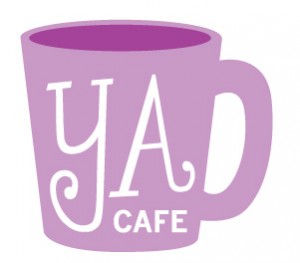 Welcome Back to YA Cafe, where book lovers can gather and chat about teen literature. I’m your barista, along with Ghenet from All About Them Words. Each Friday we pick from a menu of topics and share our thoughts on our respective blogs.
Welcome Back to YA Cafe, where book lovers can gather and chat about teen literature. I’m your barista, along with Ghenet from All About Them Words. Each Friday we pick from a menu of topics and share our thoughts on our respective blogs.
November’s Theme: YA Appreciation Month!
In honor of Thanksgiving, coming up in just a few weeks, Ghenet and I wanted to spend this month talking about how awesome YA is and why we’re happy that this literature exists. Because of the holiday, we’ll have our book club a bit earlier this month so start looking for the book you want to discuss. This month’s book club topic: What YA book are you most thankful for?
Today’s Special: What Do I Love About YA?
1) YA is not boring. Let’s face it, adult literature can get away with really boring stuff simply because adults are more willing to put up with boring books. If a book for teens is boring, readers will put it away and read something else, while adults are more likely to suffer their way through. How many adults slog through a book club pick despite being bored to tears simply because it’s gotten rave reviews and has some fancy sticker on the cover? Teens don’t care about book club picks or fancy stickers. As long as the characters are awesome and the story pulls you in, that’s all that matters.
2) There’s something for everyone in YA. OK, let’s get one thing straight: YA is not a genre. It’s a category, a slice of the literary pie, a set of books with a common target audience, but it’s not a genre. Why? Because within YA there are dozens of different genres, just like there are different genres for adult literature. Within YA you have romance, sci-fi, fantasy, paranormal, horror, thrillers, literary fiction and historical fiction, just to name a few genres under the YA umbrella. What brings all these books together in the YA category is three things:
- The primary target audience is teens.
- The protagonist is (usually) a teen between the ages of 14 and 18.
- The book has a “YA voice” which is nearly impossible to describe but readers know it when they see it.
What this means is that there’s variety in YA and regardless of a teen’s tastes in books, chances are, they’ll find something that will appeal to them.
3) YA crosses boundaries and takes risks. There’s a lot of risk-taking and sophisticated writing that goes on in YA these days. It’s not all Babysitter’s Club (not that there’s anything wrong with the Babysitter’s Club per se, but for some reason I don’t quite understand, most non-YA-readers seem to think of YA as being limited to that style and they don’t see all the variety YA has to offer). Some literary risks that you see in YA:
- Reinventing language in the use of vernacular (see Tyrell by Coe Booth and Feed by M.T. Anderson).
- Interesting use of point of view (see The Book Thief by Markus Zusak, where the book is narrated in an omniscient 1st person. I mean, talk about a daring POV choice).
- Approaching tough issues, such as dealing with being transgender (Luna by Julie Ann Peters), homelessness and parental neglect (again, Tyrell) and the age-old issue of needing to fit in (Perks of Being a Wallflower by Steven Chbosky), just to name a few.
4) YA brings readers together. The community of YA readers and writers is something unique that I have not seen in any other area of literature. Just look at the #YASaves campaign on Twitter that not only illustrated the impact that YA books have had on readers, but also brought of the YA community. (It was one of the top trending topics on Twitter the weekend it began.)
In the end, I love YA because it reaches readers during a critical age when books really matter. I didn’t have YA growing up, at least not the YA that we see in bookstores today. And even if I had had these books available to me, I’m not sure I would have been able to read them. (As a teen I went to a hoity-toity school where all you read was Shakespeare and Chaucer or that sort of thing.) In fact, even in college where I could have chosen English courses that were less… traditional, I always tended toward the “old stuff” because it had been hammered so deeply into my brain.
It was only years later when I started writing that I discovered YA. I kept trying to write stories that were “literary” but the voice never seemed to fit. It was always too young, too snarky or too fun to be stories for adults. Then I stumbled on YA and started reading, and before I knew it I was obsessed. It was like I had been switched at birth and shoved into the wrong literary family and now I had finally come home.
So, really, that’s why I love YA. Because it feels like home.
Check out Ghenet’s post about what she loves about YA: All About Them Words. And don’t forget to tell us what you love on Twitter with the #YAcafe hash tag!


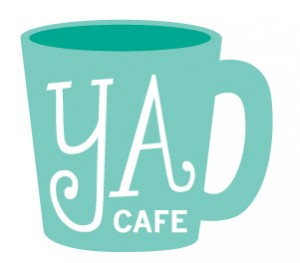
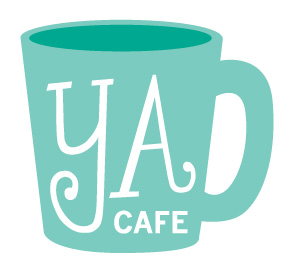
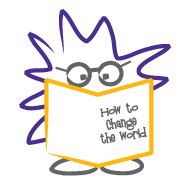





 Call me Gabi (pronounced gah-BEE). I'm a writer, freelance teacher, and a lover of books and words. I'm also the instigator of DIY MFA. iggi's my sidekick, but he thinks he's the brains behind this operation.
Call me Gabi (pronounced gah-BEE). I'm a writer, freelance teacher, and a lover of books and words. I'm also the instigator of DIY MFA. iggi's my sidekick, but he thinks he's the brains behind this operation.
 ROW80 Check-In (4)
ROW80 Check-In (4)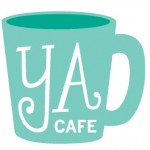 YA Cafe Book Club: The Unbecoming of Mara Dyer
YA Cafe Book Club: The Unbecoming of Mara Dyer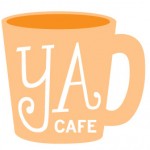 YA Cafe: Building Suspense
YA Cafe: Building Suspense